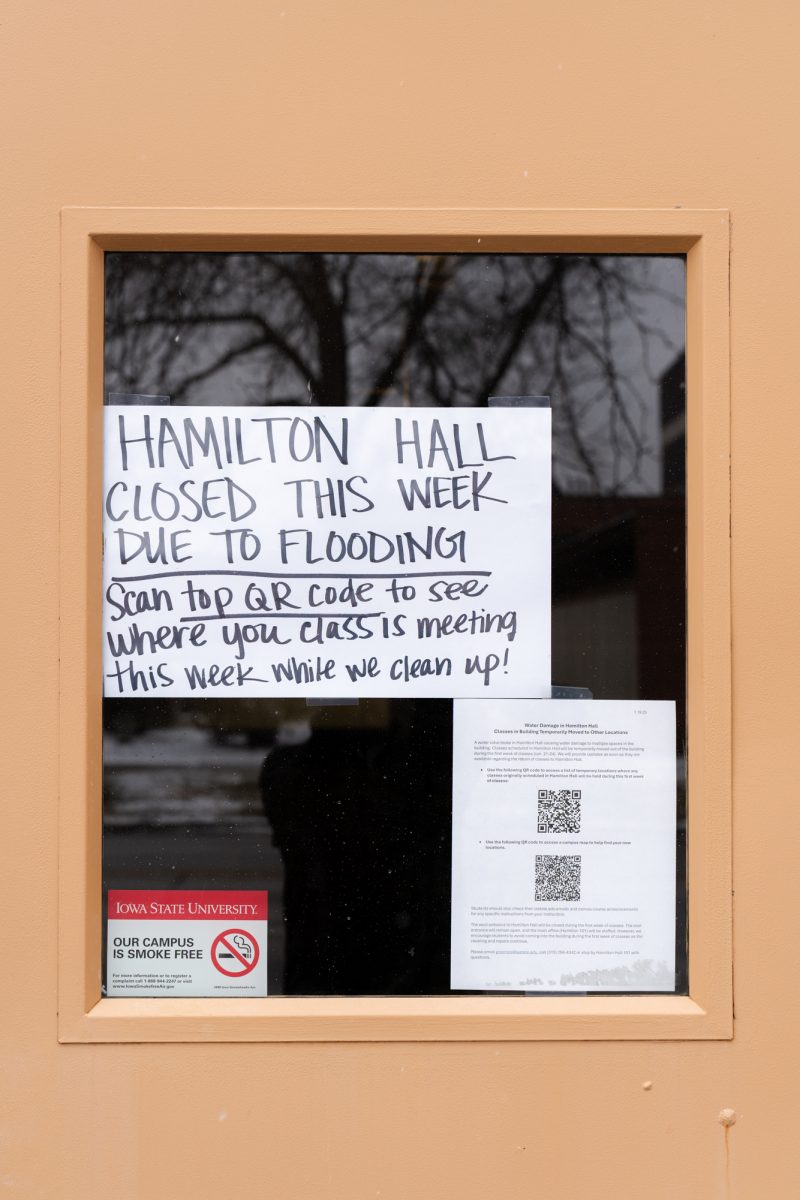A day in the life of a veterinary hero
November 17, 2005
Workers at the College of Veterinary Medicine’s emergency care clinic, which expanded its services to 24 hours a day in July, work every day to save the lives of people’s pets.
One day spent at the shelter and the staff’s passion for their work is evident.
7:15 a.m.
One animal in particular is the center of attention on this morning. Patches, a mixed-breed canine, is hooked up to a machine monitoring her heartbeat, and she is lying on a makeshift bed on the floor. Tubes stick out of Patches, who is cleanly shaven on one side except for a little bit of fur that has turned yellow.
The fur is turning colors because of a disease called coagulation that causes an animal’s blood to stick together, causing damage to its organs. Patches is struggling.
Attention quickly turns to the staff, who worked overnight in the emergency care clinic, which includes at least one veterinarian on the premises at all times to handle all emergencies. At any time during the day, six to seven vet students, a couple of technicians and veterinarians are on staff to monitor and provide treatment to injured or sick animals. At night, the overnight staff gives a brief update on all the animals in the clinic in acronyms not understandable to a layperson.
“B.A.R.?” asked Melissa Beyer, senior in veterinary medicine. “That’s code for bright, alert and responsive, the best condition given to an animal and usually a good sign the animal is going to be fine.”
Beyer said she came to Iowa State because she took a liking to animals at a young age. She had a dog when she was a young girl living in Waterloo, but after the age of 6 she was not allowed any more pets, which may have been a driving force behind the field she chose.
8 a.m.
Minor treatments, such as eye drops and ointments, are given to all of the animals in cages. It is impossible not to notice the sad looks in their eyes.
Whether it is the pug coming out of surgery with neck staples closing gaping wounds or a kitten with boundless energy wearing a neck protector, Beyer said great care is taken by these professionals and professionals-in-training.
“Iowa State has all the toys and specialists, and they can do a lot more to figure out what was going on,” Beyer said.
She speaks to the animals as if they were people, like most pet owners would to their own animals. She said it is hard not to get attached because of her love for animals, and she loves the opportunity to help them get better.
“We see the sickest of the sick,” Beyer said. “It is very rewarding to see an animal that’s very sick and get up on its feet to go home.”
9 a.m.
Elizabeth Streeter, head of the intensive care unit, makes her entrance, and she provided a little comic relief in the morning.
“Oh, my God. Patches is dead. Why didn’t anyone tell me?” Streeter said, jokingly.
She looks over to see the animal has been moved off the floor into the oxygen cage, and everybody cracks up.
“I think that it takes a special person to do emergency medicine,” Streeter said. “When an emergency comes in, you have to focus on the pet and not the drama of the situation.”
9:20 a.m.
The staff is emptying Patches’s catheter, which is taking longer than other animals’ treatments because of her deteriorating condition. Beyer said she has enjoyed her first three days in the ICU because of the hands-on training she is receiving.
“I started realizing that I wasn’t just learning for a test, which was kind of a big step,” she said. “Learning for clinics and what I’m going to be doing on my own has helped a lot.”
Beyer said she is beginning to look for jobs in the Des Moines area. She said she hopes to stay in Central Iowa, but moving somewhere else could still be an option.
“From what I’ve heard, basically, is that if you are willing to move places, you can find a job pretty easily,” Beyer said.
10 a.m.
Another round of treatments are given to the animals, but this time it is mostly concentrated on animals that may have soiled their cages. Fresh linens are dispensed.
After the treatments, conversation turns to the upcoming board exams every aspiring veterinarian must take to prove their competence.
Beyer said the test is eight hours long and includes everything a first-year practitioner should and could know. She said a certain grade is not needed – the lowest 8 percent who take the test across the country automatically fail.
“As it’s getting closer, you can tell people are getting a little more feisty,” Beyer said.
11 a.m.
Nearing the end of the four-hour shift, Patches is still in the oxygen cage, and, struggling, she opens her eyes a little.






